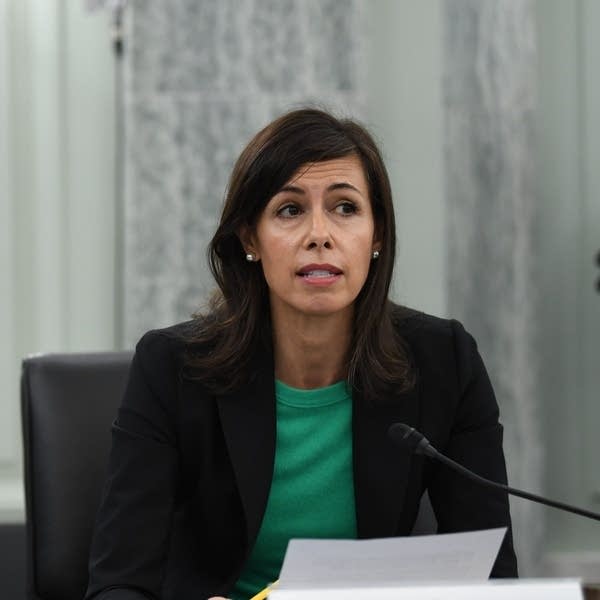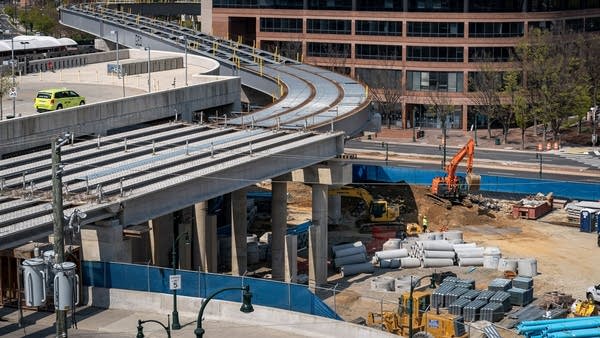Acting FCC Chairwoman Jessica Rosenworcel on new subsidies to connect low-income Americans to the internet.

Throughout the pandemic, we’ve been focused on how the internet is everything. This week, we’re talking to the new head of the Federal Communications Commission, which creates most of the policy that affects the internet. Access and infrastructure are important, but only if people can afford that access.
Today, we’re talking about the cost of getting online. Congress has created a new $3 billion fund to provide low-income Americans with $50 per month for broadband service. The subsidies start next week and the program is, for now, temporary. I spoke with the new acting chairwoman of the FCC, Jessica Rosenworcel, about how it might change the landscape. The following is an edited transcript of our conversation.

Jessica Rosenworcel: We are going to be offering help to households where there’s job loss, someone’s on a Pell Grant, or [where] students are on the free and reduced lunch program, because we’re trying to make sure that they can get connected and stay connected. And there is a $50 per month support for that, and that support goes up to $75 per month on tribal lands. I think we have to study this program, which starts May 12, [and] see what good it did, who it was able to connect, because I think if we study that data, we’re going to learn more about what we need to do with respect to affordability in order to get everybody connected in this country.
Molly Wood: I want to ask you about Lifeline, in relation to cost, a program that has existed for a long time — it started with landline phones, and provides about $9.25 a household. Do you think that this recognition of the essential nature of internet access and this existing emergency fund could change the way that program works?
Rosenworcel: Yeah, the Lifeline program is a program that’s been around since President Reagan was in office. And most [phone] calling involved a curly cord that was attached to a jack in the wall. And today, dial tone in the digital age is internet access. And that program has not been really right-sized and fully shaped for the internet era. But this new emergency broadband benefit program is. So I really hope we can study it, learn from it and work with Congress to extend it, or figure out how we update and reform Lifeline so that we have a stronger and more enduring broadband affordability program in this country.
Wood: Do you feel like you can count on funding and backup and maybe congressional action to keep these programs alive?
Rosenworcel: You know, I think I used to have these conversations with congressional offices, and broadband was a luxury good, it wasn’t a necessity. And this pandemic has changed all of that. So I think there is more interest, more willingness to talk about what we need to do to fund these kinds of services, because everyone needs access to fully participate in civic and commercial life. And communities that don’t have access, really don’t have a fair shot in the 21st century.
Wood: I also just wonder about the power shift. As you see this money flowing into municipalities, I think that there has been a sense that, in some ways, the conversation has been dominated by what big telecom companies have been willing to invest in and where. Do you have a sense that that power balance is shifting a little bit?
Rosenworcel: Yeah, I think that one of the realities of this infrastructure is there are really high sunk and fixed costs with traditional broadband and, as a result, it gets deployed in places where companies can recover those costs faster — those are often urban, suburban, more populated areas. And in the places that are less populated, well, for revenue reasons, companies may not always serve them first. So we’re going to have to look at other alternatives, other ways, other technologies to make sure we serve 100% of us. And those might involve small, local companies, that might involve satellite services, it might involve fixed wireless or electric co-ops. We’re going to have to get creative to make sure we get service everywhere.

Here’s a link to the FCC’s site for households that want to enroll in the new broadband subsidy program. If you want to get into problems with Lifeline, New America’s Open Technology Institute estimates the current $9.25 Lifeline subsidy only covers about 13% of average monthly costs for fixed home internet service in the United States. And the FCC itself has estimated that only 26% of eligible households participate in the program.
There’s an interesting TechCrunch article from April arguing that the government should rebuild and reform Lifeline to make it easier to enroll and to reach more people, simplify delivery of its benefits and raise the subsidy. Interestingly, the Biden administration’s infrastructure plan would eventually get rid of government subsidies for broadband and instead potentially impose cost controls on telecoms. The White House fact sheet says “the President is committed to working with Congress to find a solution to reduce internet prices for all Americans.”
Speaking of Congress, on the show tomorrow we’ll talk with Chairwoman Rosenworcel about net neutrality and potentially finding a permanent solution, at long last, through legislation, and we’ll also dig into whether the FCC has a role to play in content moderation and disinformation, which turns out to be highly relevant in lots of ways. Not least of which is the Facebook Oversight Board’s decision Wednesday that the company made the right move in banning President Donald Trump from its platform in the wake of the January 6 insurrection at the Capitol, but that it made the right move the wrong way. The board kicked the ultimate decision back to Facebook, recommending a revisiting of the ban in six months, during which a lot could change.
On that note, I do happen to think the biggest element of the board’s report was the part where it asked Facebook a whole bunch of questions, including how much the company’s own algorithms may have promoted the misinformation and lies about the 2020 election being stolen that led to violence in more than one instance, including the assault on the Capitol. Facebook declined to answer.
Which, I mean, of course they did.